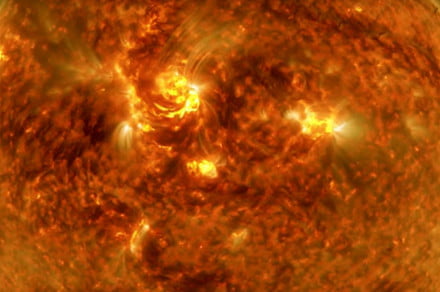[youtube https://www.youtube.com/watch?v=sdOwNZZYtKg]
A rare event is occurring on Monday: The planet Mercury is passing directly between the Earth and the Sun. This is called a transit, and it occurs only 13 times every 100 years. The last transit of Mercury was in 2016, and the next one won’t be until 2023, so you should take the chance to view this special astronomical event while you can.
The good news for sky scanners is that the transit will be visible across most of the planet, including from North and South America, Europe, Africa, western Asia, and New Zealand. The event will begin at 4:35 a.m. PT, but if you don’t fancy getting up that early then don’t worry — the transit lasts for nearly six hours so you have plenty of time to catch it later in the morning. The pinnacle of the event will occur at 7:20 a.m. PT, when the center of Mercury will be at its closest to the center of the Sun.
Watching the transit, you’ll be able to see the tiny black disk of Mercury passing in front of the surface of the Sun, covering just 1/283rd of the Sun’s face as it appears to us. That’s small enough to require the use of a telescope, and of course, it’s dangerous to look directly into the Sun so you’ll need to use a solar filter as well.
If you don’t have access to a telescope then you can still follow the event online. The Solar Dynamics Observatory will be providing data about the transit to NASA, which will show near-real-time images and short movies of the event on the transit website.
Transits are not only fun cosmic events to observe, but they were also important in the development of early astronomical knowledge. It was by studying the transits of Mercury and Venus in the early 1600s that Johannes Kepler was able to see that the orbits of the planets are elliptical, not circular as previously believed.
“In 1627, Kepler predicted that a transit of Mercury would occur on November 7, 1631,” the Solar Dynamics Observatory explained in a blog post. “Pierre Gassendi watched from his Paris observatory and saw a small black dot move across the face of the Sun on that day. A real triumph for the Kepler calculations!”

